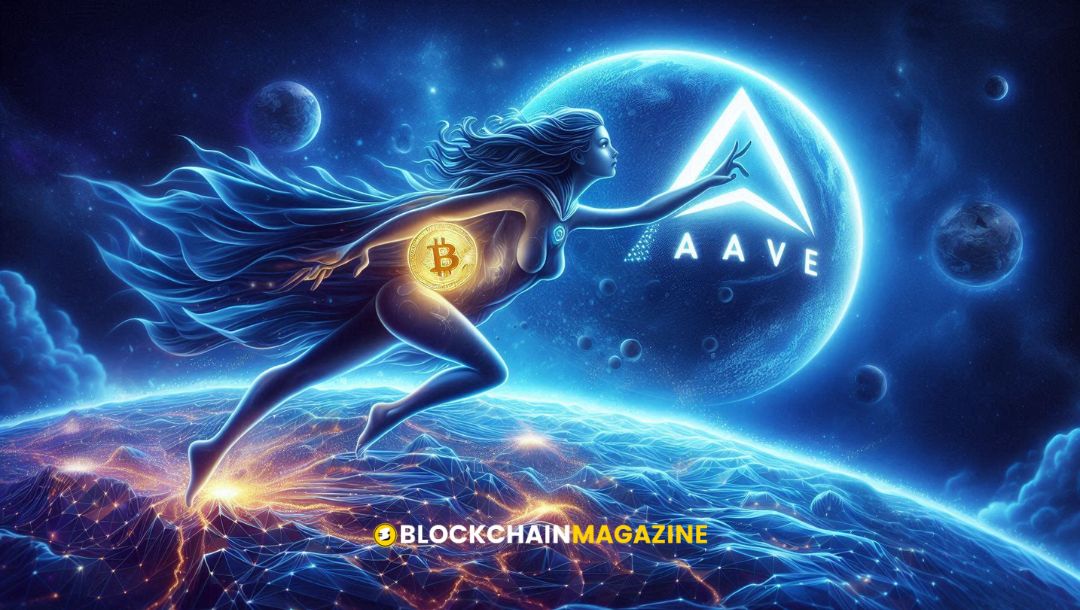“Beyond Proof-of-Work: Can Alternative Mining Models Address Bitcoin’s Supply and Sustainability Challenges? “
Bitcoin’s Proof-of-Work (PoW) mining model has been a cornerstone of its security and decentralization since its inception. However, this model has faced increasing scrutiny due to its significant energy consumption and environmental impact. As the demand for Bitcoin continues to grow, so do concerns about its sustainability and economic viability. This article explores whether alternative mining models can address these challenges, focusing on their potential to enhance Bitcoin’s supply, sustainability, and overall ecosystem.
Key Takeaways
- Bitcoin’s Proof-of-Work model is energy-intensive and has significant environmental impacts.
- Alternative mining models like Proof-of-Stake and Proof-of-Elapsed-Time offer potential solutions to these issues.
- The integration of renewable energy sources in Bitcoin mining could mitigate some environmental concerns.
- Economic viability and market adoption are crucial for the success of alternative mining models.
- Technological innovations and regulatory considerations will play a significant role in the future of Bitcoin mining.
Understanding Bitcoin’s Proof-of-Work Mining Model
Bitcoin’s Proof-of-Work (PoW) mining model is the pioneering consensus mechanism that powers the first and most well-known cryptocurrency. PoW requires miners to solve complex cryptographic puzzles using computational power. The first to solve the puzzle adds a new block to the blockchain and is rewarded with cryptocurrency. This process ensures network security but is energy-intensive. PoW’s significant impact on Bitcoin is twofold: it secures the network against fraudulent transactions and decentralizes the mining process.
Alternative Mining Models: An Overview
Proof-of-Stake
Proof-of-Stake (PoS) is a consensus mechanism that aims to address the energy consumption concerns associated with Proof-of-Work (PoW). Instead of miners competing to solve complex mathematical problems, validators are chosen based on the number of coins they hold and are willing to “stake” as collateral. This model significantly reduces the energy required for maintaining the blockchain network.
Proof-of-Elapsed-Time
Proof-of-Elapsed-Time (PoET) is another alternative that focuses on fair and efficient consensus. In PoET, each node in the network waits for a randomly chosen time period, and the first node to complete this waiting period gets to create the next block. This method is designed to be energy-efficient and secure, leveraging trusted execution environments to ensure the randomness and fairness of the waiting time.
Hybrid Models
Hybrid models combine elements of both PoW and PoS to create a more balanced and secure consensus mechanism. These models aim to leverage the strengths of each approach while mitigating their respective weaknesses. For instance, a hybrid model might use PoW for initial block creation and PoS for subsequent validations, thereby addressing both security and energy efficiency concerns.
As the blockchain industry evolves, exploring these alternative mining models becomes crucial for achieving long-term sustainability and scalability.
Environmental Impact of Bitcoin Mining
Carbon Footprint
Bitcoin mining has been heavily criticized for its significant carbon footprint. The energy-intensive nature of mining, especially in regions reliant on coal and other non-renewable sources, exacerbates this issue. However, there is a growing shift towards integrating renewable energy sources in mining operations, which could mitigate some of these environmental concerns.
Renewable Energy Integration
The industry is witnessing a paradigm shift towards the integration of renewable energy sources in mining operations. This shift is not only driven by environmental concerns but also by the potential for cost savings and increased efficiency. Some mining operations are now powered by solar, wind, and hydroelectric energy, reducing their reliance on fossil fuels.
Sustainability Challenges
Despite the progress in renewable energy integration, several sustainability challenges remain. These include the environmental impact of e-waste from obsolete mining hardware and the noise pollution generated by mining operations. Addressing these issues is crucial for the long-term sustainability of Bitcoin mining.
The environmental impact of Bitcoin mining has become a focal point for both critics and proponents of digital currencies. The energy-intensive nature of mining, particularly in regions where coal and other non-renewable sources dominate the energy mix, poses challenges to sustainability goals. Recognizing these concerns, the industry is witnessing a paradigm shift towards the integration of renewable energy sources in mining operations.
Economic Viability of Alternative Mining Models
Cost Efficiency
Alternative mining models like Proof-of-Stake (PoS) and Proof-of-Elapsed-Time (PoET) offer significant cost efficiencies compared to traditional Proof-of-Work (PoW). PoS eliminates the need for energy-intensive computations, thereby reducing operational costs. PoET, on the other hand, leverages trusted execution environments to ensure fairness, which can also lead to cost savings. These models can stimulate economic growth by making mining more accessible and less resource-intensive.
Market Adoption
The market adoption of alternative mining models is gradually increasing. Ethereum’s transition to PoS is a notable example, demonstrating that large-scale blockchain networks can successfully shift to more sustainable models. This shift can promote financial inclusion by lowering the barriers to entry for new participants. However, the adoption rate is still contingent on various factors, including technological maturity and regulatory support.
Regulatory Considerations
Regulatory frameworks play a crucial role in the economic viability of alternative mining models. Governments are increasingly focusing on the environmental impact of cryptocurrency mining, which can drive renewable energy initiatives. Favorable regulations can provide the necessary support for these models to thrive, while stringent regulations could pose challenges. Identifying optimal geographic and regulatory contexts for mining is essential for maximizing benefits.
The economic implications of alternative mining models extend beyond cost savings. They offer a pathway to more sustainable and inclusive financial systems, addressing both supply and sustainability challenges in the cryptocurrency space.
Technological Innovations in Mining
Advanced Hardware Solutions
The journey of Bitcoin mining, a pivotal mechanism of the blockchain, narrates a tale of relentless innovation and technological evolution. Advanced hardware solutions have been at the forefront of this evolution, offering a glimpse into a future where technology and sustainability go hand in hand. These solutions not only address the concerns associated with traditional mining but also pave the way for a greener, more sustainable future in digital finance.
Software Optimizations
Software optimizations play a crucial role in enhancing the efficiency of mining operations. By implementing cutting-edge algorithms and protocols, miners can significantly reduce energy consumption and improve overall performance. This approach not only makes mining more cost-effective but also aligns with the industry’s goal of achieving economic development through sustainable mining.
Future Trends
The potential of future technologies like fusion is acknowledged, but the immediate emphasis is on making tangible improvements to the sustainability of mining practices. Emerging trends in mining technology focus on integrating renewable energy sources and developing hybrid models that combine the best aspects of different mining approaches. These efforts highlight the symbiotic relationship between technological innovation and environmental responsibility, setting a benchmark for the industry at large.
The evolution of Bitcoin mining technology is a testament to the industry’s commitment to innovation and sustainability. As new technologies emerge, the focus remains on creating a more efficient, cost-effective, and environmentally conscious mining ecosystem.
Case Studies: Successful Implementations of Alternative Mining Models
Ethereum’s shift from Proof-of-Work (PoW) to Proof-of-Stake (PoS) marks a significant milestone in the blockchain industry. This transition aims to address the energy consumption concerns associated with PoW. By requiring validators to hold and stake Ether, rather than solving complex mathematical problems, Ethereum’s PoS model is expected to be more energy-efficient and scalable.
Chia introduces a novel consensus mechanism known as Proof-of-Space and Time (PoST). This model leverages unused disk space, making it a more environmentally friendly alternative to traditional mining methods. Chia’s approach not only reduces the carbon footprint but also democratizes the mining process by allowing more participants to join the network without the need for specialized hardware.
Several other blockchain projects have successfully implemented alternative mining models. For instance, Algorand uses a Pure Proof-of-Stake (PPoS) model, which ensures a high level of security and decentralization. Similarly, projects like Cardano and Tezos have adopted PoS mechanisms to enhance their network’s sustainability and efficiency.
The field presents various opportunities for future studies, including exploration of renewable-based mining business models and empirical profitability case studies.
Future Prospects and Challenges
Scalability remains a significant challenge for Bitcoin and other cryptocurrencies. As the network grows, the ability to process transactions efficiently becomes more complex. Future models must be created without reliance on energy usage and their disproportionate negative impact on society. The potential of future technologies like fusion is acknowledged, but the immediate emphasis is on making tangible improvements to the sustainability of mining practices.
Security is paramount in any blockchain network. As alternative mining models are explored, ensuring the security of the network is crucial. The implementation of blockchain technology in various fields presents various opportunities for future studies, including exploration of renewable-based mining business models and empirical profitability case studies. Identifying optimal geographic and regulatory contexts for mining is also essential.
Decentralization is one of the core principles of blockchain technology. However, achieving true decentralization while maintaining efficiency and security is a complex task. The field presents various opportunities for future studies, including scalability analyses and the quantification of Bitcoin’s externalities. Future research areas are categorized into PESTLE areas for better clarity for the academicians and practitioners interested in this study.
The future research areas around the relationship in this study are categorized into PESTLE areas for better clarity for the academicians and practitioners interested in this study.
As we look towards the future, the blockchain industry is poised for unprecedented growth and innovation. However, with these exciting prospects come significant challenges that must be navigated. Stay informed and ahead of the curve by visiting our website for the latest insights and updates. Join us in exploring the future of blockchain technology!
Conclusion
The exploration of alternative mining models beyond Proof-of-Work (PoW) reveals a complex but promising landscape for addressing Bitcoin’s supply and sustainability challenges. While PoW mining has been criticized for its energy-intensive nature, it also presents opportunities for renewable energy integration and grid decarbonization. However, achieving these benefits requires significant adaptations in mining practices and a willingness to embrace flexible load responses. The future of Bitcoin mining may not follow a linear path, but with continued research and careful consideration of emerging technologies and models, there is potential for a more sustainable and resilient Bitcoin network. As the sector evolves, it is crucial to remain open to innovative solutions that balance the need for security, efficiency, and environmental responsibility.
Frequently Asked Questions
What is Proof-of-Work (PoW) in Bitcoin mining?
Proof-of-Work (PoW) is a consensus algorithm used in Bitcoin mining where miners solve complex mathematical problems to validate transactions and secure the network.
Why is energy consumption a concern in Bitcoin mining?
Bitcoin mining is energy-intensive due to the computational power required for PoW, leading to high electricity consumption and environmental concerns.
What are some alternative mining models to PoW?
Alternative mining models include Proof-of-Stake (PoS), Proof-of-Elapsed-Time (PoET), and hybrid models that combine different consensus mechanisms.
How can alternative mining models address Bitcoin’s sustainability challenges?
Alternative mining models like PoS are less energy-intensive and can reduce the carbon footprint of mining, contributing to a more sustainable cryptocurrency ecosystem.
What is the economic viability of alternative mining models?
The economic viability of alternative mining models depends on factors like cost efficiency, market adoption, and regulatory considerations.
Can Bitcoin mining integrate renewable energy sources?
Yes, Bitcoin mining can integrate renewable energy sources, which can help reduce its carbon footprint and support the transition to a decarbonized energy grid.
Stay informed with daily updates from Blockchain Magazine on Google News. Click here to follow us and mark as favorite: [Blockchain Magazine on Google News].
Get Blockchain Insights In Inbox
Stay ahead of the curve with expert analysis and market updates.
latest from tech
Disclaimer: Any post shared by a third-party agency are sponsored and Blockchain Magazine has no views on any such posts. The views and opinions expressed in this post are those of the clients and do not necessarily reflect the official policy or position of Blockchain Magazine. The information provided in this post is for informational purposes only and should not be considered as financial, investment, or professional advice. Blockchain Magazine does not endorse or promote any specific products, services, or companies mentioned in this posts. Readers are encouraged to conduct their own research and consult with a qualified professional before making any financial decisions. The featured image used is just a creative depiction of the title and it does not intend to hurt sentiments of any person or institution. If it hurts anyone sentiments, please do not hesitate to reach out to Blockchain Magazine.

 Bitcoin
Bitcoin  Ethereum
Ethereum  XRP
XRP  Tether
Tether  Solana
Solana  USDC
USDC  Dogecoin
Dogecoin  Cardano
Cardano  Lido Staked Ether
Lido Staked Ether  TRON
TRON  Wrapped Bitcoin
Wrapped Bitcoin  Wrapped stETH
Wrapped stETH  Chainlink
Chainlink  Avalanche
Avalanche  Sui
Sui  Stellar
Stellar  Litecoin
Litecoin  Toncoin
Toncoin  Shiba Inu
Shiba Inu  Hedera
Hedera  LEO Token
LEO Token  MANTRA
MANTRA  USDS
USDS  Hyperliquid
Hyperliquid  WETH
WETH  Polkadot
Polkadot  Bitcoin Cash
Bitcoin Cash  Bitget Token
Bitget Token  Ethena USDe
Ethena USDe  Wrapped eETH
Wrapped eETH  Uniswap
Uniswap  Monero
Monero  NEAR Protocol
NEAR Protocol  Pepe
Pepe  WhiteBIT Coin
WhiteBIT Coin  Aave
Aave  Aptos
Aptos  Bittensor
Bittensor  Ondo
Ondo  Internet Computer
Internet Computer  Dai
Dai  Official Trump
Official Trump  Ethereum Classic
Ethereum Classic  Mantle
Mantle  Tokenize Xchange
Tokenize Xchange  OKB
OKB  Gate
Gate  sUSDS
sUSDS  Coinbase Wrapped BTC
Coinbase Wrapped BTC 



